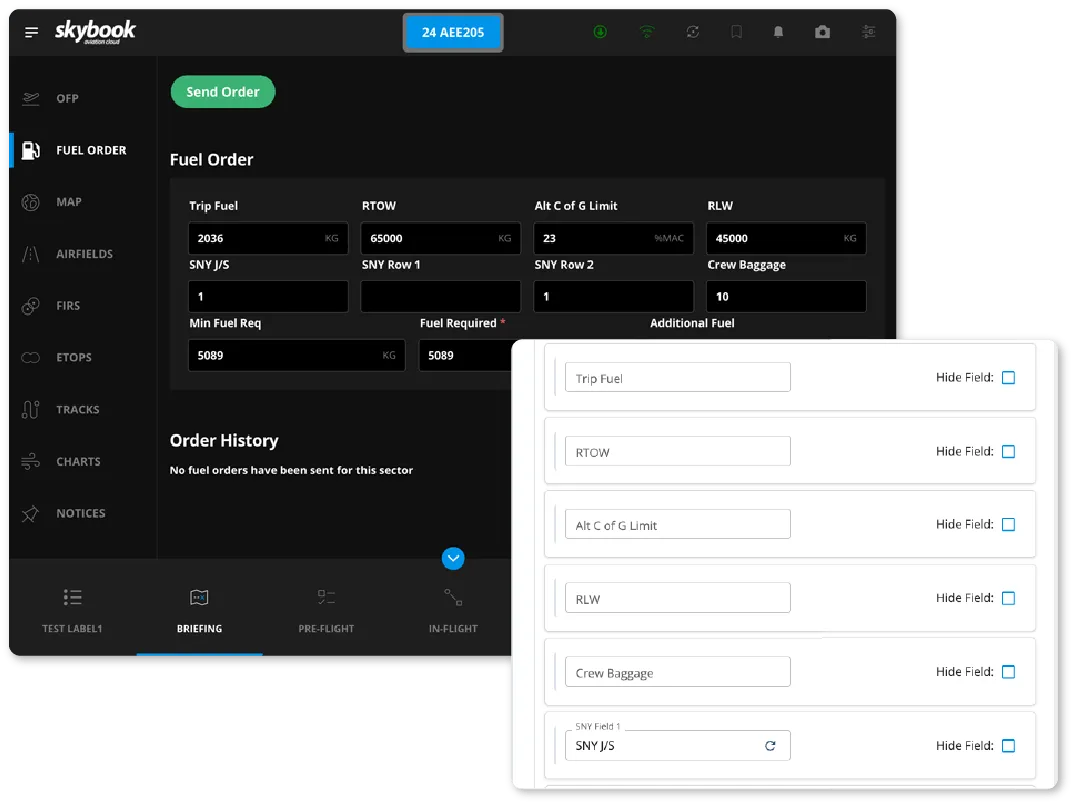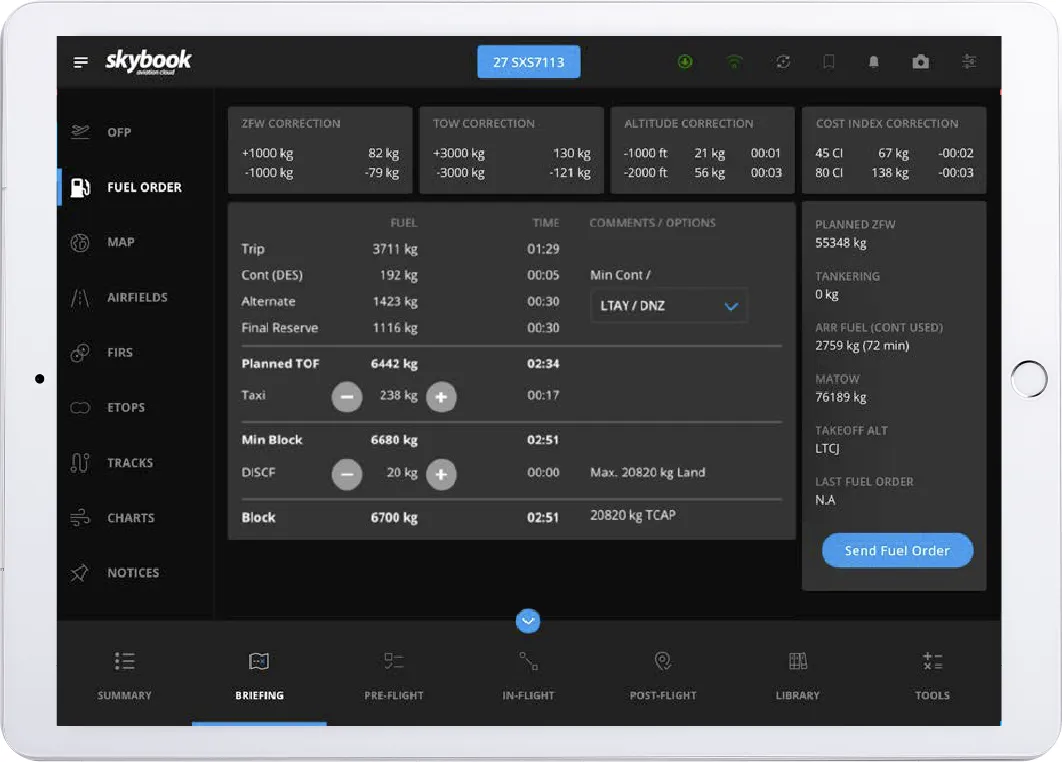
Leon Software Integration with skybook
Updated 15th December 2025
A fuel order on the Electronic Flight Bag (EFB) provides pilots with detailed information about the amount of fuel required for a specific flight. Pilots can use the EFB to request additional fuel if required for the journey and provide a reason for the extra fuel.
Fuel orders on the EFB are generated based on the operational flight plan, considering factors like flight distance, aircraft weight, and forecasted weather conditions.
The skybook EFB automatically incorporates the minimum fuel requirement from the OFP, streamlining the flight briefing process further.
Did you know that pilots can also view the aircraft fuel order history for their current sector?
There are a few reasons why this is useful…
Completed aircraft fuel orders are then synced to skybook flight dispatch on the Ground Portal, allowing dispatchers to view them in sector status updates.
The fuel order data is also included in the flight summary dashboard, providing an audit trail and ensuring compliance for the airline.

Your fuel order section can be fully customised to your operation, making flight planning faster, more accurate and aligned with your needs.
With extra fields like Trip Fuel, RTOW, Alternate C of G Limit, Restricted Landing Weight and even supernumerary seating details.
You can also track crew baggage, giving crews and dispatchers a complete view of all fuel and load requirements.
An Adjustment-based Fuel Order version allows pilots to view extra information from the OFP, with planned fuel figures and options to increase or decrease the Taxi and Discretionary fuel separately, and select an alternate airfield.

If an airline utilizes a digital fueling provider like aFuel to reduce turnaround times and fuel-related delays, skybook can seamlessly integrate with this service, automatically transmitting fuel orders from the EFB directly to the fuel provider.
We've recently implemented fuel order integration for a customer - learn more in our SunExpress case study.
Pilots might request additional fuel for several reasons to ensure safety, operational efficiency, and compliance. Common reasons may include:
Weather Conditions
Unforeseen weather, such as strong headwinds, thunderstorms, or low visibility at the destination, can require extra fuel for potential delays or alternate airport routing.
Air Traffic Delays
Anticipated delays from air traffic control (ATC), especially in congested airspace or busy airports, may require additional fuel to account for potential holding patterns or extended taxiing times.
Diversion Requirements
Enroute diversion possibilities due to restricted airspace, active military zones, or volcanic activity can make additional fuel necessary.
Increased Holding Requirements
If there is a known NOTAM awareness issue at the destination, such as congestion or a temporary runway closure, pilots might plan to hold longer and thus request extra fuel.
Safety Margin
Occasionally, pilots request additional fuel as an extra safety margin, giving them flexibility to handle unplanned events with more assurance.
Aircraft Performance Considerations:
Aircraft weight & balance, expected performance limitations, or unusual cargo may prompt pilots to request additional fuel as a contingency.
Operational Policy or Company Standards:
Some airlines might have specific policies that encourage or require a certain buffer of additional fuel for certain types of flights, destinations, or conditions.
Fuel tankering:
Pilots might request fuel for tankering needs to avoid or reduce refueling at the destination, when fuel is cheaper at the departure airport.
Several parties might need to review a pilot’s reasoning for requesting additional fuel, depending on the context:

Regardless of the decision on fuel orders, the pilot’s choice is logged within skybook to support safety, efficiency and regulatory compliance. All aircraft fuel data can be reviewed in post-flight reports and analyses.
You may also be interested to see how arrival fuel information can be streamlined on the EFB application and analysed on the ground.
If you’d like to learn more about skybook or experience it first-hand, please don’t hesitate to reach out.